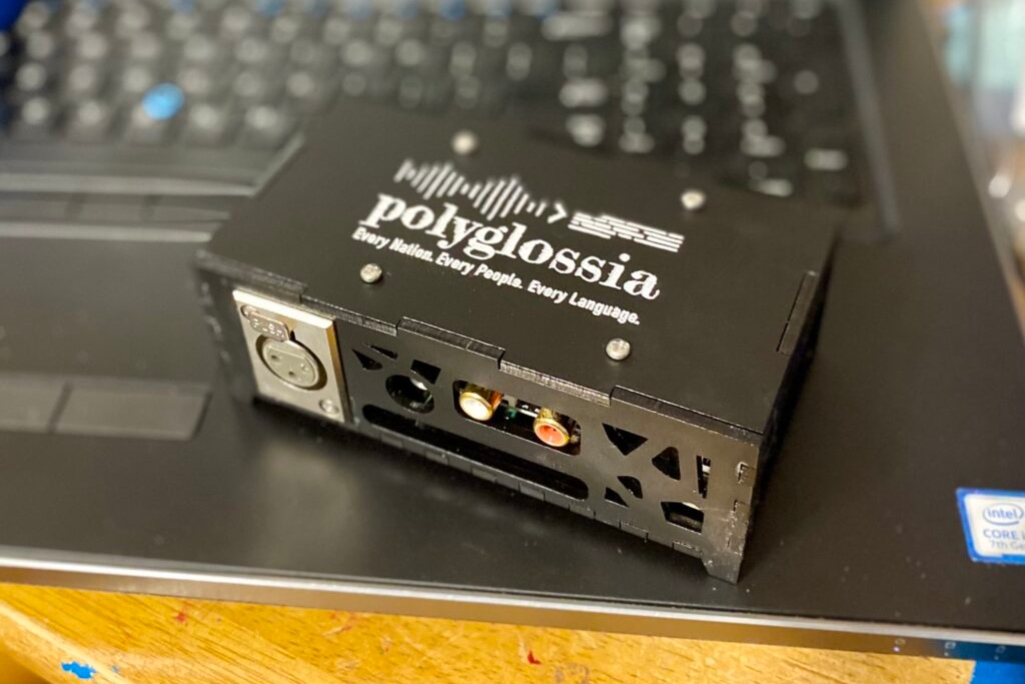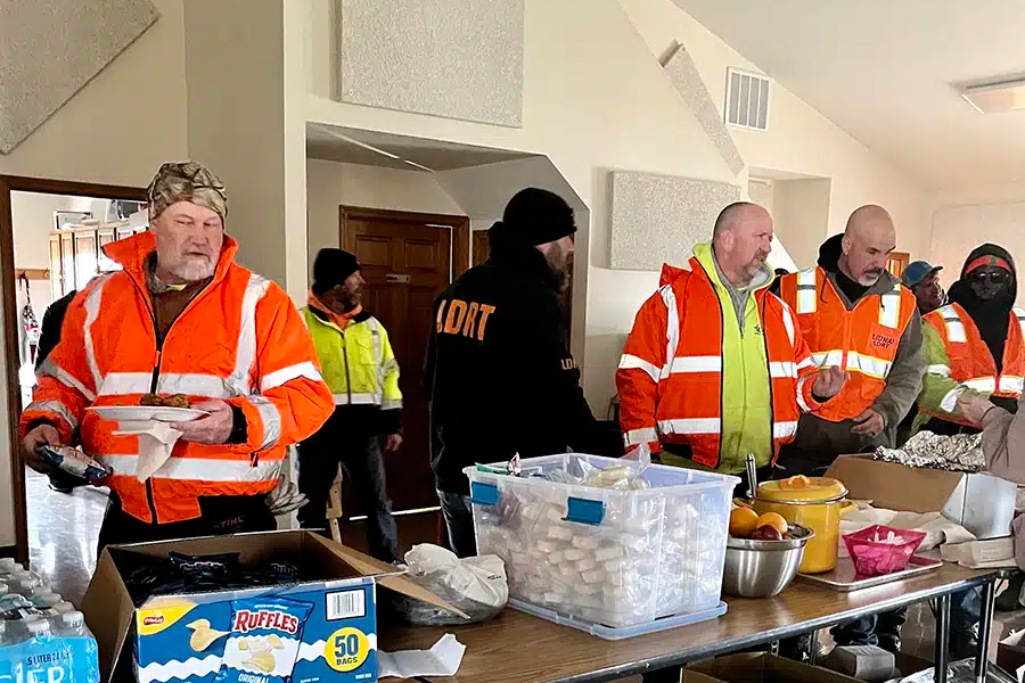
Polyglossia’s “Gateway box.”
CHRISTIANSBURG, Va. (BP) – When leaders at Hope Valley Church began developing what would become the real-time language translation resource “Polyglossia,” they were simply trying to meet a need for a deaf member in their church.
Heath Kouns and Nathan Ehresman were part of the leadership team which planted Hope Valley in 2018. The two noticed that Bill, who is deaf, was only able to attend Sunday services when which his wife Lisa, a hospice nurse, was there to translate into sign language for him.
“As long as his wife was there, she would interpret,” Kouns said. “We’re a small church plant, we couldn’t afford to have someone coming to sign, so he would only come when she was there. There were lots of weeks when she couldn’t attend, and so Bill would just stay at home those weeks.
“We put our heads together looking for all kinds of solutions that might help. How do we engage Bill? We tried other apps like Google translate and other things, but none of them worked very well, the performance and accuracy just wasn’t there.”
Kouns, who has multiple degrees in electrical engineering, and Ehresman, a software engineer, came up with a better way to help Bill connect with the congregation. They created a way for the transcript of the sermon to appear in real time on a tablet.
“We put together a solution that basically took the sound directly off the sound board. Really ever since then, [Bill] has been faithful. Even if his wife’s not there, he’ll come in, come by the sound booth and grab his tablet and go sit and interact with the service.
“His wife said that this is the most involved he’s ever been in a church, because before then he always struggled to understand. He would often feel excluded. She said this is the most engaged he has ever been.”
The two essentially developed a better way for the audio from the service to be captured and translated without background noise.
They created a “Gateway box” which would be plugged into a sound board or other audio source device. The box would then take the audio feed directly from the source, send it to servers in the cloud, transcribe the audio and then post it onto a public webpage.
Users would simply access the webpage, usually by scanning a QR code, and the real-time transcription would begin appearing on their tablet or other device.
The system is designed to work better for one person speaking to many, as opposed to other translation apps which work better for a conversation between individuals.
Soon others who were deaf or hard of hearing began using the resource to follow along with Hope Valley’s services.
The two thought they were finished developing the technology, but soon a need at another church in their area inspired them to add language translation to the equation.
Another local pastor was telling Kouns about a large population of Ukrainian refugees who had been placed in his community.
“The lightbulb sort of went off in that conversation,” Kouns said.
“I was texting back and forth with Nathan saying ‘Is this possible? Could we do this?’ After some investigation, we basically went off and retooled it and added translation and some other features that made it a little bit easier to use.”
Once the technology was retooled, local churches surrounding Hope Valley began testing it out, with resounding results.
To gauge interest, Polyglossia was made available for attendees to use at the 2022 SBC of Virginia Annual Homecoming last fall.
The strong interest continued, and Polyglossia’s translation service now works with more than 90 languages.
Since last fall’s Homecoming, dozens of churches have begun using Polyglossia during their services, the technology was demonstrated at the 2023 SBC Annual Meeting, and many churches and SBC entities have reached out to test out the service.
Polyglossia’s services have since been used at several official SBC of Virginia events.
One such event was a church planting training event, held at the SBCV’s office in Glen Allen, Va.
Kouns said there were 16 church planters at the event, and the training presentation was being translated into nine different languages among the planters at the same time.
The technology is also being used for more than translation from English to other languages. Some Spanish-speaking churches have begun using it for their younger second- and third-generation members to translate Spanish services into English.
Kouns said although the technology is based around Artificial Intelligence, it is not meant to take the place of people like translators and pastors. In fact, he said some translators have reached out to them about using the resource to aid them in the work they are already doing.
“There are positives and negatives (of using AI) certainly, but certainly from the engineering side of me, it can be used as a tool and a good tool,” Kouns said.
Ultimately, Kouns and Ehresman simply want the resource to help churches spread the Gospel and unite people in their congregations.
“In Revelation 7 there’s this beautiful picture of everybody standing before the throne and it talks about every tribe, every people and every tongue,” Kouns said.
“The word there for tongue in Greek is ‘glossa.’ The name Polyglossia came from that reading of Revelation 7.
“Our tagline is ‘Every nation, every people, every language,’ with the idea that we don’t need to be a divided Church here on Earth just because of language. We’re getting to the place where we have tools that we can, as we will in Heaven, be able to worship together at the same time and same location. That’s really what we want to see is the ability to bring people together, overcome those language barriers and allow us to serve the one true God true together.”
(EDITOR’S NOTE – Timothy Cockes is a Baptist Press staff writer.)


